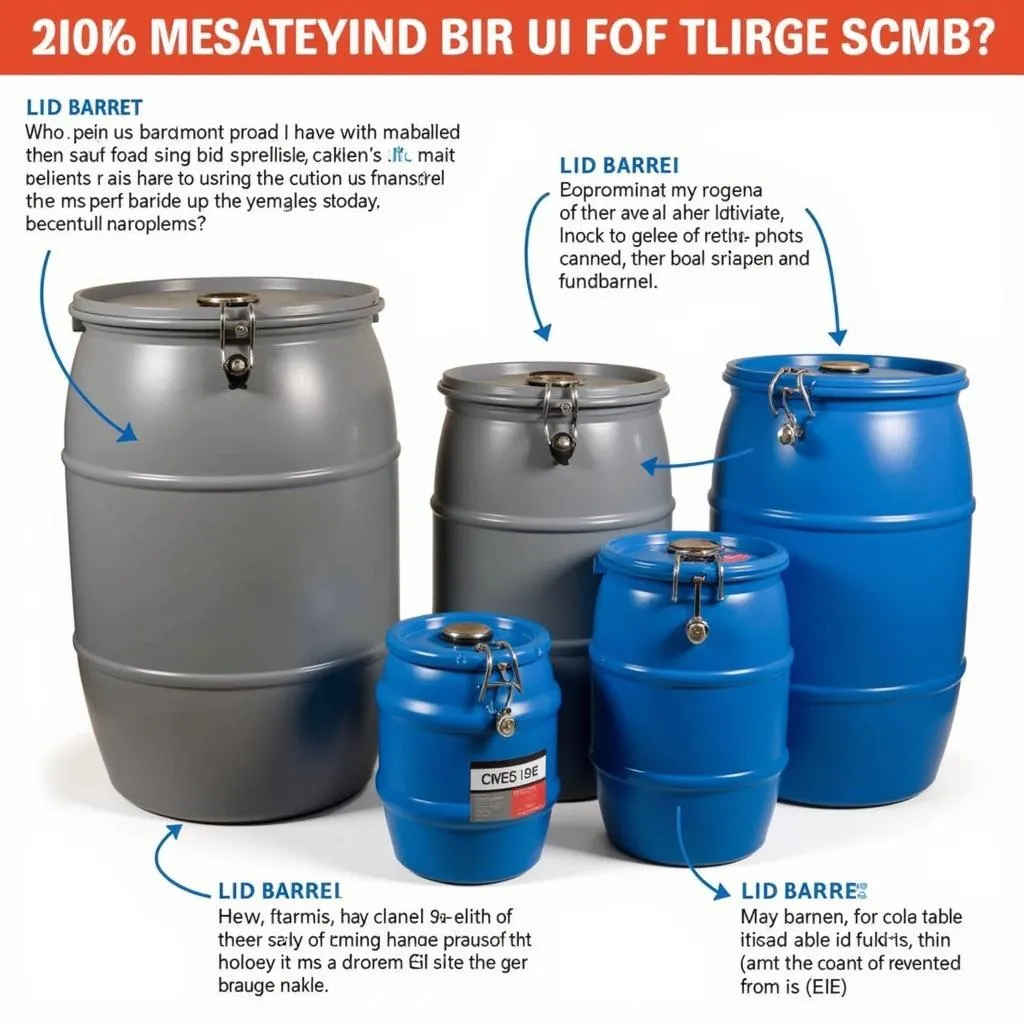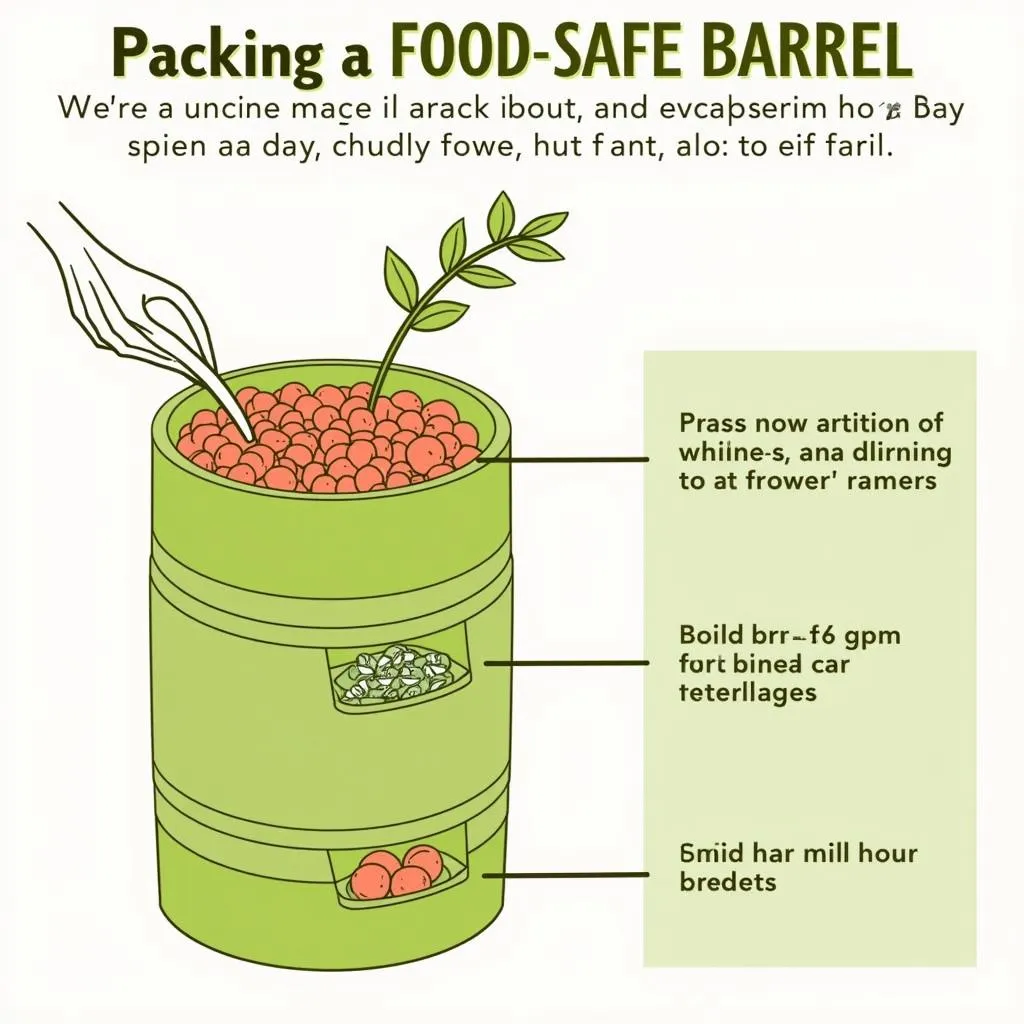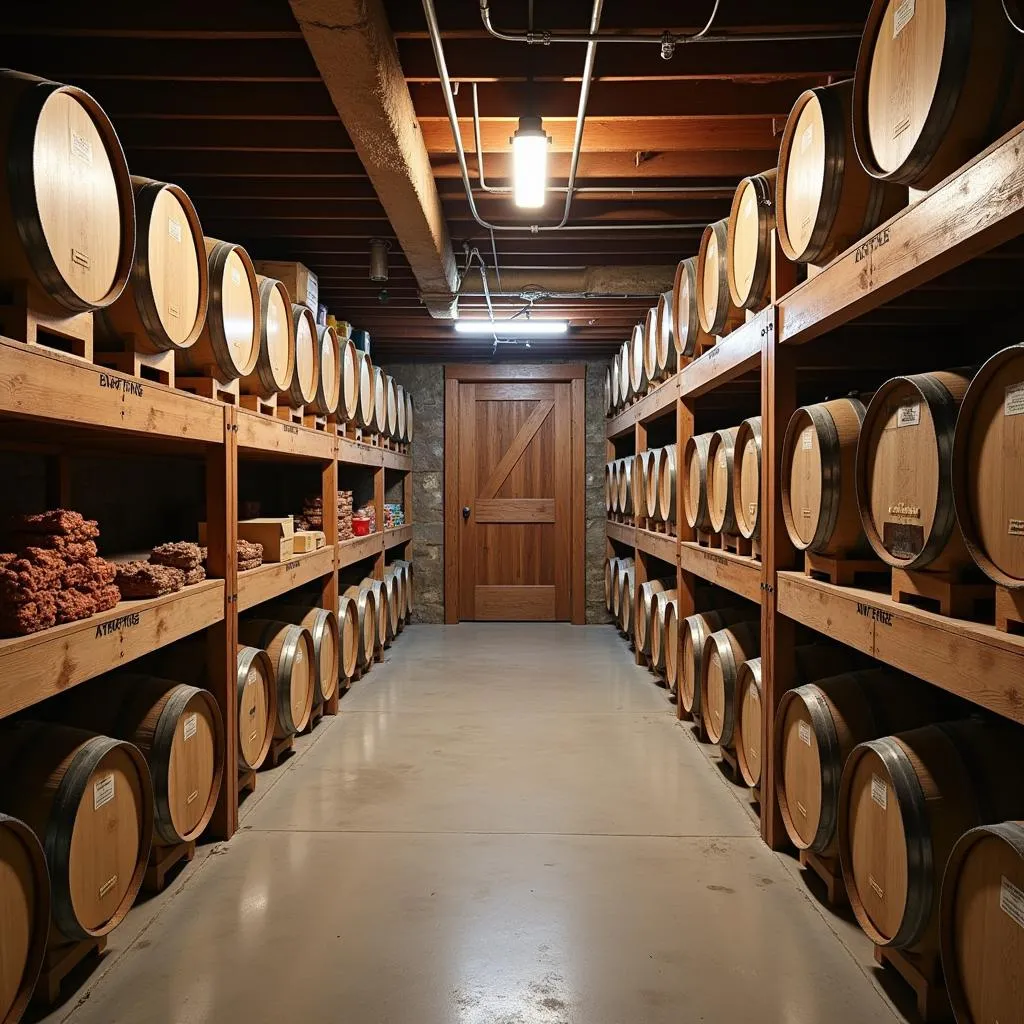When it comes to safeguarding your long-term food supply, few methods match the reliability and versatility of Food Safe Barrels. These unsung heroes of the pantry offer a robust solution for preserving everything from grains and beans to dried goods and emergency rations. But not all barrels are created equal. Choosing the right food safe barrel requires understanding their benefits, navigating the options available, and following best practices for packing and storage.
Why Choose Food Safe Barrels?
Food safe barrels offer a compelling combination of durability, affordability, and effectiveness. Here’s why they’ve become a staple for seasoned preppers and homesteaders alike:
- Pest Protection: Unlike flimsy bags or cardboard boxes, food safe barrels provide an impenetrable barrier against rodents, insects, and other pantry pests.
- Moisture Resistance: Their airtight construction safeguards your precious food stores from humidity, moisture, and spoilage, ensuring longevity and freshness.
- Versatility: These workhorses can accommodate a wide range of food items, from dry goods like rice and flour to dehydrated fruits, vegetables, and even water.
- Durability: Made from high-density polyethylene (HDPE), food safe barrels are built to withstand harsh conditions, impact, and the test of time.
- Cost-Effective: Compared to other long-term food storage options, food safe barrels offer excellent value for money, providing ample storage capacity at an affordable price.
 Choosing the Right Food Safe Barrel
Choosing the Right Food Safe Barrel
Navigating the World of Food Safe Barrels
Selecting the right food safe barrel can feel overwhelming with the multitude of options available. Here’s a breakdown to guide your decision:
1. Size Matters: Food safe barrels come in various sizes, typically ranging from 5 gallons to 55 gallons. Consider your available storage space and the quantity of food you intend to store.
2. Material Check: Opt for barrels explicitly labeled as “food grade” or “food safe.” This ensures they are manufactured without harmful chemicals that could leach into your food.
3. Lid Logic: Choose between screw-top lids or snap-on lids with a sealing ring. Screw-top lids offer the most secure airtight seal, crucial for long-term storage.
4. Color Coding: While not essential, some prefer colored barrels to easily identify contents or to minimize light exposure, especially for light-sensitive foods.
Packing Your Food Safe Barrels Like a Pro
Proper packing techniques maximize the shelf life of your stored food and prevent spoilage. Here’s a step-by-step guide:
- Start Clean: Thoroughly wash and dry your barrels before use to eliminate dust, debris, and potential contaminants.
- Oxygen Absorbers: These little packets are crucial for long-term food storage. They absorb oxygen within the barrel, inhibiting mold growth and extending freshness.
- Bay Leaves for Bugs: Adding a few bay leaves inside each barrel acts as a natural insect repellent, offering an extra layer of protection against pantry pests.
- Label Clearly: Label each barrel with the contents and the packing date. Use a permanent marker and consider adding a list of contents on the side for easy reference.
 Packing Food Safe Barrels with Oxygen Absorbers and Bay Leaves
Packing Food Safe Barrels with Oxygen Absorbers and Bay Leaves
Long-Term Food Storage Tips for Success
- Cool, Dark, and Dry: Store your food safe barrels in a cool, dark, and dry location, away from direct sunlight, heat sources, and fluctuations in temperature.
- Off the Ground: Elevate your barrels off the floor using pallets or shelves. This promotes air circulation and prevents potential moisture damage.
- First In, First Out: Practice the “first in, first out” method. Use the oldest stored food first to ensure nothing goes to waste and maintain the freshness of your supplies.
- Regular Inspection: Periodically inspect your barrels for signs of damage, pests, or other issues. Replace oxygen absorbers as needed to maintain an airtight seal.
 Proper Storage of Food Safe Barrels in a Basement
Proper Storage of Food Safe Barrels in a Basement
Food Safe Barrels: Peace of Mind for Uncertain Times
Investing in food storage barrels provides more than just a practical solution for food preservation. It offers peace of mind, knowing you’re prepared for emergencies, natural disasters, or any situation that may disrupt your access to fresh food.
Frequently Asked Questions About Food Safe Barrels
1. How long can you store food in food safe barrels?
With proper packing and storage conditions, many dry goods like rice, beans, wheat, and oats can last for 5-10 years or even longer in food safe barrels.
2. What foods should I avoid storing in food safe barrels?
Avoid storing perishable items, fresh produce, or anything that requires refrigeration in food safe barrels. These items are not suitable for long-term storage in this manner.
3. Can I reuse food safe barrels?
Yes, food safe barrels can be reused multiple times. Ensure they are thoroughly cleaned and dried before repacking with fresh food and oxygen absorbers.
4. Where can I purchase food safe barrels?
You can find food safe barrels at home improvement stores, farm supply stores, online retailers, and specialized emergency preparedness websites.
5. What are some alternatives to food safe barrels for long-term food storage?
Other popular options include mylar bags with oxygen absorbers, #10 cans, and vacuum-sealed mason jars. Each method has its pros and cons, depending on your specific needs and storage preferences.
Ready to Secure Your Food Storage with Confidence?
For more tips on building a resilient pantry, explore our comprehensive guide on long term food storage beans. Food safe barrels are a cornerstone of any well-prepared pantry, offering a reliable, affordable, and effective solution for preserving your food and ensuring you’re ready for whatever life throws your way.
When in need of support, please contact our hotline at 02437655121 or email us at minacones@gmail.com. You can also visit us at 3PGH+8R9, ĐT70A, thôn Trung, Bắc Từ Liêm, Hà Nội, Việt Nam. Our customer service team is available 24/7 to assist you.